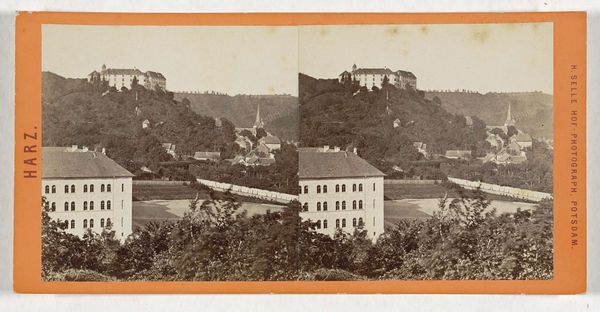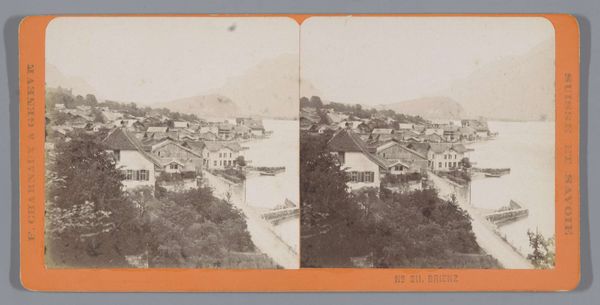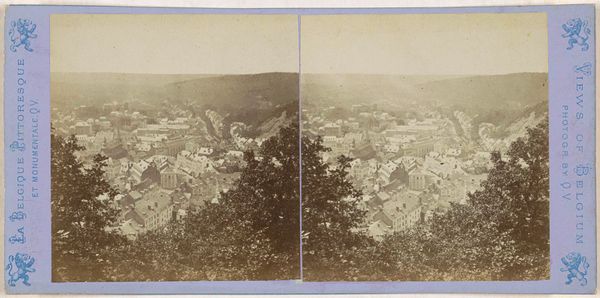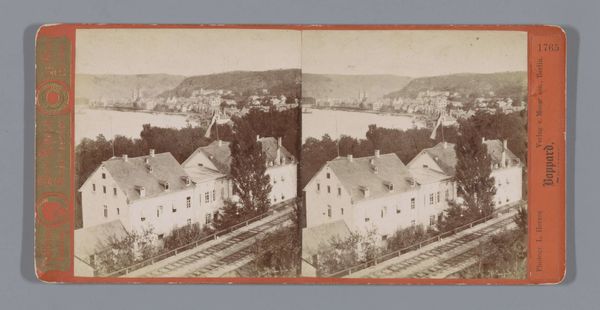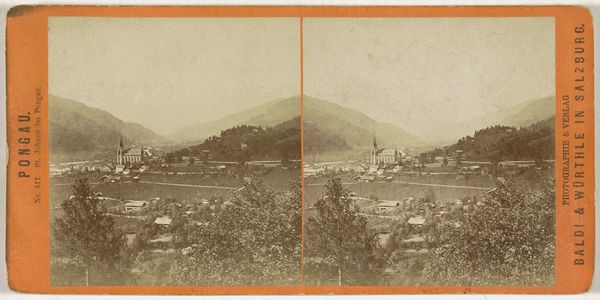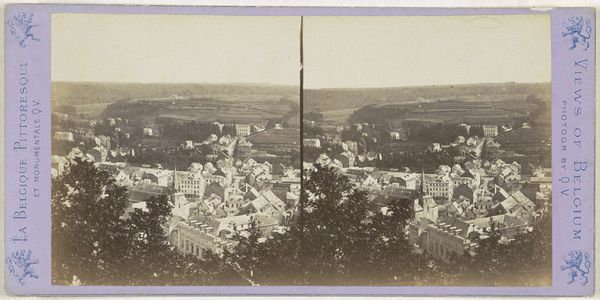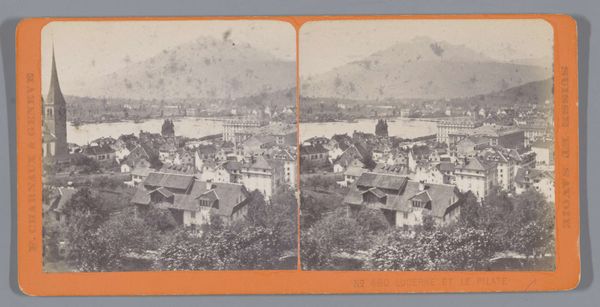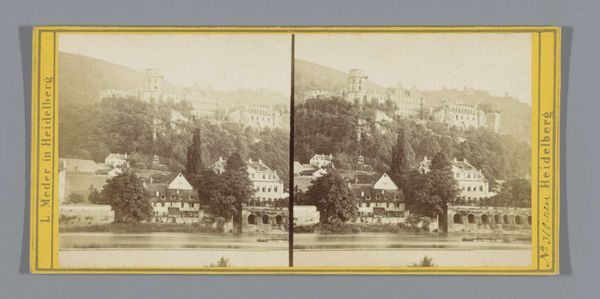
Dimensions: height 87 mm, width 177 mm
Copyright: Rijks Museum: Open Domain
Curator: Let's explore this stereo photograph titled "Gezicht op Eisenach met daarboven de Wartburg," created between 1868 and 1890 by Hermann Selle, an albumen print. Editor: It's quite striking! The composition feels almost deliberately constructed, with the town nestled below the imposing Wartburg castle. I’m curious, what layers of meaning do you find in this piece, beyond a simple cityscape? Curator: It transcends the aesthetic; this image speaks volumes about power, national identity, and cultural preservation. The Wartburg, perched high above, isn’t merely a picturesque feature. It was a potent symbol of German heritage, a site of contestation during a period of intense nationalistic fervor. Think about Luther's translation of the Bible within those walls and how this links to both religious and political authority. Editor: I hadn't considered Luther's connection. So the photograph isn’t just documenting a place but reinforcing a narrative, a carefully curated national story? Curator: Exactly. And photography, a relatively new medium at the time, played a key role in disseminating these nationalistic ideas to a broader audience. Images like this helped construct a shared sense of belonging, particularly during a time of political and social upheaval in Germany. We also need to question the power dynamics inherent in viewing a city from this elevated, almost god-like perspective. Who has the right to represent whom? Editor: That is interesting. Looking at it now, there's a sense of…controlled perspective? It’s romanticized but also feels a little staged. It does make you consider who the image was created *for.* Curator: Precisely! We must question whose story is being told and who is excluded from this particular representation of German identity. And considering that this is a stereoscopic image, meant to be viewed in 3D, consider the implications of experiencing a deepened sense of place as a form of ideological reinforcement. Editor: Wow, I will definitely think of 19th century photographs differently going forward. This image contains far more than initially meets the eye! Curator: Indeed. Analyzing art through an intersectional lens opens up complex conversations, connecting the past with present struggles around representation, identity, and power.
Comments
No comments
Be the first to comment and join the conversation on the ultimate creative platform.

